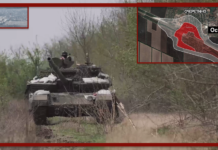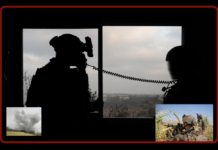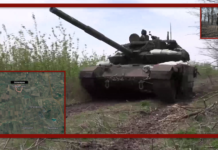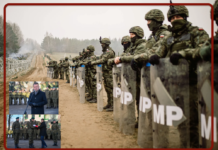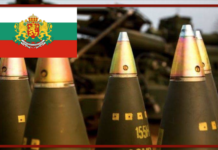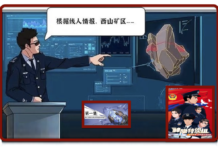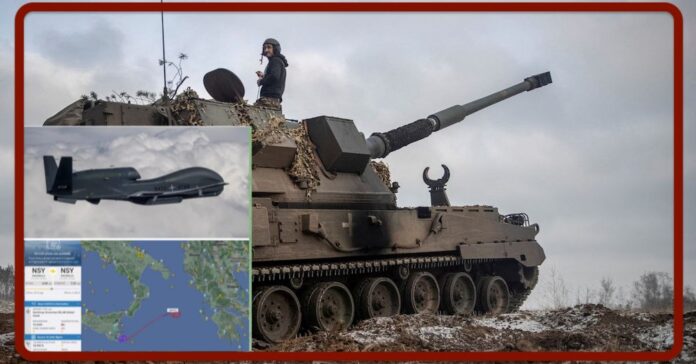
On 17 March Vladimir Putin spoke about the development of Crimea’s transport infrastructure on the eve of what Russians call ‘the ninth anniversary of the reunification of the peninsula with Russia’.
Russian President Vladimir Putin, during a meeting on the socio-economic development of Crimea and Sevastopol, spoke about the commissioning of hundreds of important infrastructure facilities in the region, including the Simferopol airport, the Tavrida federal highway, and the Crimean bridge. As the president noted, its restoration continues and should be completed on schedule.
On the social sphere the posts read: ‘The President also celebrated the ninth anniversary of the reunification of the peninsula with Russia and announced the expansion of the programme for the socio-economic development of Crimea until 2027’.
Other statements came from Marat Khusnullin, Deputy Prime Minister of Russia, according to whom ‘the Azov Sea will be completely brought into the road ring’. “This year the section of the M4 Don motorway from Krasnodar to the Crimean bridge will be completed.” “Only 46 treatment plants are being planned and built on the Russian Black Sea coast, which will allow the Black Sea to be seriously cleaned.” And again he said, “The repair of the railway part of the Crimean bridge will be completed earlier than planned.” It is planned to start launching small trucks along the Crimean bridge.” “Crimea is fully supplied with gas and electricity, the water supply problem has been solved.”
All this while an RQ-4B Global Hawk FORTE10 of the US Air Force took off from Naval Air Station Sigonella in Sicily and headed for the Black Sea after flying over Bulgarian airspace. As the route continued towards Varna, Romanian airspace. Heading towards Moldova and from there to the Black Sea.
In the sky, US Air Force Boeing RC-135W Rivet Joint and Lockheed EP-3E Aries II reconnaissance planes are also circling Romania at the same time.
The Ukrainians despite Putin’s speeches still intend to reunify Crimea with Ukraine. And apparently in this direction, according to social sphere accounts, NATO-European deliveries to Ukraine are being directed.
The Kremlin commented on the delivery of combat aircraft from Poland to Ukraine stating: “The supply of fighter planes by some NATO countries, including Poland, to Kiev increases the level of their direct involvement in the conflict, but it will not affect the special operation, but will only cause more problems for Ukraine itself,” presidential spokesman Dmitry Peskov said. “The delivered equipment will be subject to destruction,” he added.
The reference is to the MIGs that Slovakia will deliver to Ukraine together with a number of 2P25 Kub / Kub-M air defence systems. Meanwhile, the Russians claim, again via social media, that the Russian Navy plans to equip submarines with hypersonic missiles. Theoretically, almost all operational submarines can be equipped, including strategic ones.
Not only that, for specialised departments such as the 29th Special Purpose Separate Company the new Russian transport drone ‘TrAMP’ is on its way, which is going through the final stage of ground tests and preparing for its first flight. The device has passed taxiing, testing and debugging of control mechanisms and has also made runs without leaving the runway to clarify design parameters. In the near future, a normal engine with a three-bladed propeller and permanent landing gear will be installed on the drone instead of the technological ones.
The Russian Ministry of Industry and Trade stated that the Russian market will need one million UAV operators by 2030. At the moment, statistics in Russia show 100,000 official specialists.
Now that the UAV is at the peak of its popularity, operations in Ukraine have brought this type of technology to one of the most relevant uses. More and more factories are being built to produce a variety of UAVs, and capacities are increasing along with the products manufactured.
Investments are coming in and sooner or later it will be necessary to diversify the use of UAVs, bringing them back from military to civil use. When Russian operations end, the market will be full of a variety of drones, so investors’ investments will not run out, and then drones will be actively integrated into the civil sphere.
The CEO of PTERO, Amir Valiev, draws an interesting analogy: in the future, the work of a drone operator will be comparable to that of a taxi driver. The development of the UAV sector for the civil market allows us to solve another important task: the employment of veterans from the northern military district. In fact, a large part of the personnel in this sector will be recruited from the military, which by then will have accumulated extremely valuable experience in UAV control.
In a good sense, the practice of integration should be created now, but there are natural limits here. Due to hostilities in the border regions, flights are now banned and they want to replicate such initiatives in the rear. This means that the use of UAVs and the development of this sector are still difficult to implement from a legal point of view.
Graziella Giangiulio


